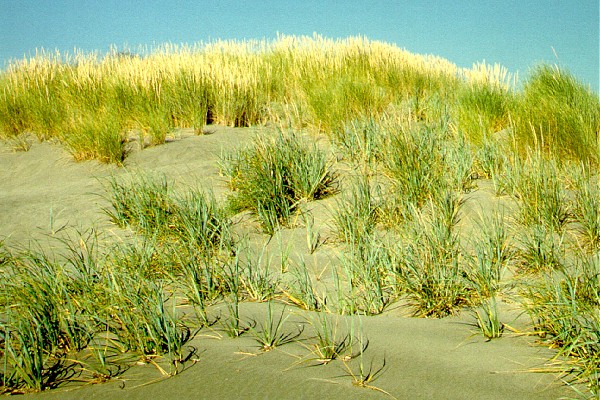 |
The Global Invasive Species Team |  |
|
|
|
Introduction First slide Slide #5 Slide #10 Slide #15 Slide #20 Slide #25 Slide #30 Slide #35 Slide #40 Slide #45 Slide #50 Slide #55 Slide #60 Slide #65 Slide #70 Last slide |

|
|||
| Other invasive plants may hold soils better than the native species they displace, in some cases leading to significant changes in geomorphology and topography. European beachgrass (Ammophila arenaria) was planted to stabilize dunes along the U.S. Pacific coast. It has been too effective, invading huge areas of dunes up and down the coast where it forms dense stands that trap more sand than the native beachgrasses and other dune vegetation did. This leads to changes in the shape, height and orientation of the dunes. Pacific coast dunes which formed under native vegetation were generally oriented perpendicular to the beach while those that form under European beachgrass are oriented roughly parallel to the beach, often forming long ridges and altering the hydrology of the swales immediately inland (Barbour et al. 1976, Barbour and Johnson 1988, Wiedemann and Pickart 1996). | ||||
| Slide 31 |
|
